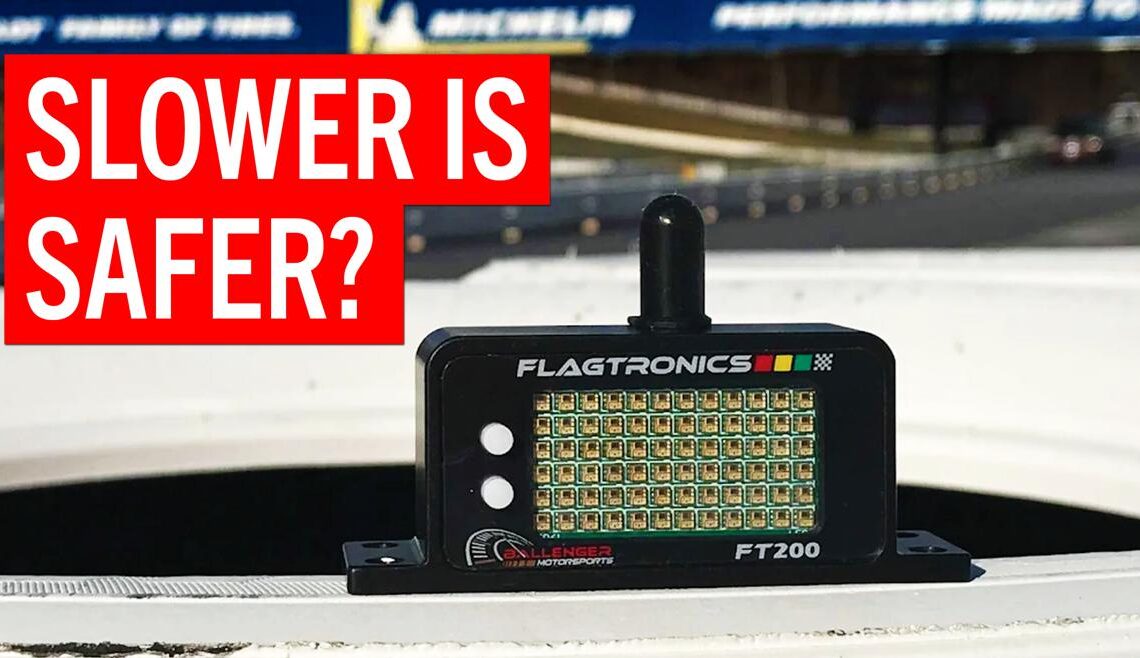Want to race more under green? Want the safety crew to reach a disabled car quicker, especially if it’s yours–and you’re in it? Proponents of the Code 35 rule, with its signature purple flag, say it accomplishes all of that. Code 35 paces the field at 35 mph–hence the name–while drivers maintain their on-track positions.
Virginia International Raceway helped develop the rule at the grassroots level. “VIR stopped doing hot pulls because many years ago a wrecker got hit,” explains Diana Robinson, flagger coordinator at VIR. “Somebody wasn’t paying attention to the flags under a local waving.”
Instead of attending cars under local yellows, VIR went to full-course cautions. This didn’t sit well with drivers hungry for green laps. It also had other issues.
“You still run the risk of a wayward car trying to catch the field,” ChampCar’s Dana Morrison says. “If someone gets released from pit lane, when they go through the incident area, they’re not under control of the pace car, whereas with a Code 35, it slows everybody down.”
Code 35 also offers another benefit. “To quote Darrell Waltrip, ‘Cautions breed cautions,’” Dana adds. “By having the field spread out under Code 35, when I go back to green, I don’t have 40 of my fastest cars at the front all diving into Turn 1. [Code 35] reduces the number of cautions.”
To bring out a Code 35, ChampCar first throws a full-course caution and then, 10 seconds later, adds the Code 35 flag. VIR waits about 15 seconds.
But how do you ensure that cars maintain 35 mph? Dana says you could time laps and have corner workers watch. Is it 100% effective? No, but it’s a step in the right direction.
However, Flagtronics offers systems that keep track of cars–and their speeds–while alerting drivers with warning lights. The in-car gear starts at around $250, while tracks will need to purchase the required gear.
“There’s a hard number in the system that, when a car exceeds that speed, the [in-car] unit in the car flashes,” Dana explains. “Now that we’ve been using the system for a year, drivers know that if they’re exceeding 35 mph and it’s flashing at them, it’s also flashing at my timing guy, too.” At the official’s discretion, a black flag can then be sent to that driver’s Flagtronics unit.
Ultimately, officials at both VIR and ChampCar feel that Code 35 has made racing safer, especially when time matters and safety gear…
Click Here to Read the Full Original Article at Grassroots Motorsports Online Articles…

